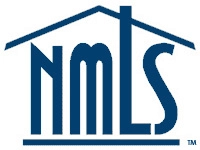Using Alimony, Child Support, or Separate Maintenance for Income When Getting a Mortgage
Document that alimony, child support, or separate ma intenance will cont inue to be paid for at least thre e years after the date of the mortgage application, as verified by one of the following:
A copy of a divorce decree or separation agreement (if the divorce is not final) that indicates the monthly payment and states the amount of the award and the period of time over which it will be received.
Note: If a borrower who is separated does not have a separation agreement
that specifies alimony or child support payments, the lender should not
consider any proposed or voluntary payments as income.
Any other type of written legal agreement or court decree describing the payment terms.
Documentation that verifies any applicable state law that mandates alimony, child
support, or separate maintenance payments, which must specify the conditions under which the payments must be made.
Check for limitations on the continuance of the payments, such as the age of the children for whom the support is being paid or the duration over which alimony is required to be paid.
Document no less than six months of the borrower’s most recent regular receipt of the full payment.
Review the payment history to determine its suitability as stable qualifying income. To be considered stable income, full, regular, and timely payments must have been received f or six months or longer. Income received for less than six months is considered unstable and may not be used to qualify the borrower f or the mortgage. In addition, if full or partial payments are made on a, inconsistent or sporadic basis, the income is not acceptable for the purpose of qualifying the borrower.
Note: The lender may include alimony, child support, or separate maintenance as income only if
the borrower discloses it on the Form 1003 and requests that it be considered in qualifying for the
loan.
If a borrower’s alimony or child support income is va.idated by the DU validation service, DU will issue a message indicating the required documentation. This documentation may differ from the requirements described above for the verification of the borrower’s regular receipt of the full payment and its use as stable qualifying income














